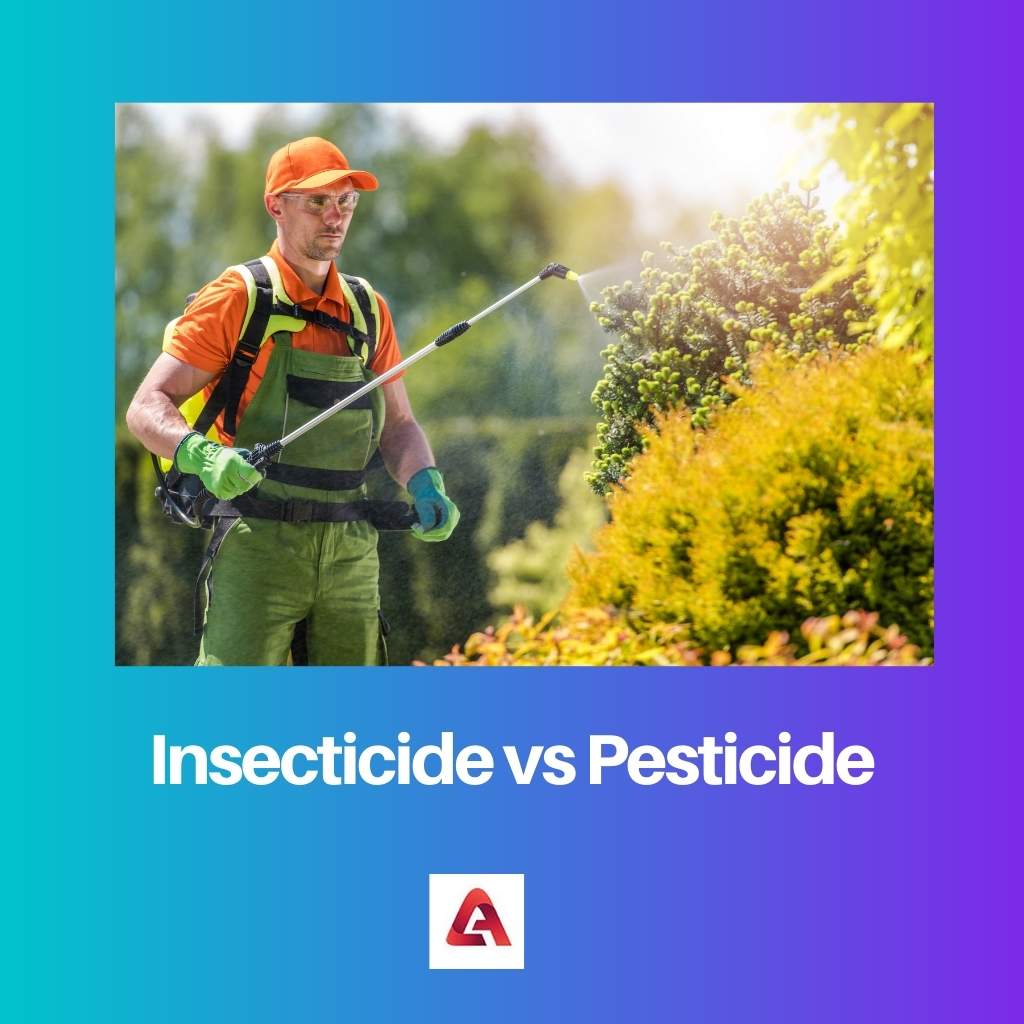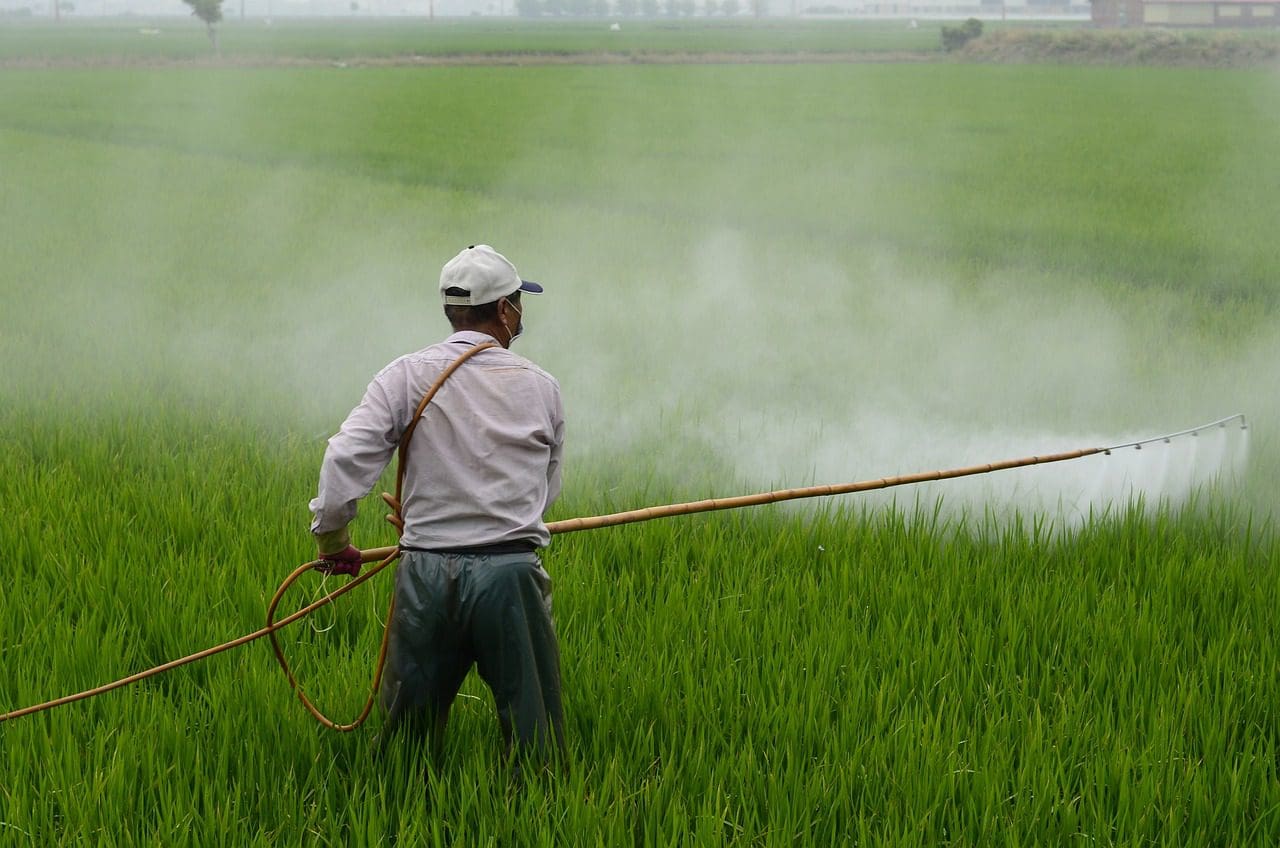Insecticides and pesticides are chemically designed to kill unwelcomed plants and insects that disturb and interrupt the main plant’s need to grow faster.
In the long run, this combination of chemicals that are designed scientifically helps in the better yield of required crops. These bots work for the betterment of crop yield, but they kill different types of plant infectors.
Key Takeaways
- Insecticides are chemicals used to kill insects, whereas Pesticides are chemicals used to control or kill a wide range of pests, including insects, rodents, and weeds.
- Insecticides target specific insects, while Pesticides can target multiple types of pests.
- Overuse of Insecticides can lead to resistant insect populations, whereas Pesticides can harm non-target organisms and the environment.
Insecticide vs Pesticide
Insecticide is a chemical that is a type of pesticide used to protect a type of plant from insects. The chemicals control or get rid of the insect without harming the plant. Pesticide is a chemical or toxic substance that gets rid of pests that are a threat to plants, and they reduce the growth of weeds.

Insecticides come under the subdivision of pesticides. It helps to protect the required crop of plants from a particular type of insect.
These chemicals help the plants to grow by protecting them against harmful insects and providing them with a better surrounding with actual things they need to grow, and this surely does not include insects.
Pesticides are harmful substances for plants. They help to reduce the growth of weeds, kill animals and insects that harm the crop, and overall help the plant grow in a better environment.
There are many subdivisions of pesticides that are specially designed to attack particular insect that is more prone around that particular area.
Comparison Table
| Parameters of Comparison | Insecticide | Pesticide |
|---|---|---|
| Protection From | It gives protection from insects and mammals of a particular type. | It gives protection from all types of environmental threats in general. |
| Type | It is a sub-division of pesticides. | It has several further divisions. |
| Poisonous | It is more poisonous comparatively. | It is less poisonous comparatively. |
| Weeds | It does not destroy weeds. | It destroys weeds as well. |
| Example | DDC, 4-D, etc. | DDC, Boric, etc. |
What is Insecticide?
Insecticides are a combination of toxic chemicals that help to protect animals from all kinds of harmful insects such as ants, bugs, worms, drain flies, beetles, red and black bugs, etc.
Chlorinated hydrocarbons, pyrethroids, and carbamates are some common insecticide ingredients used in agriculture as well as urban areas.
These are made with a combination of toxic substances and are specific with the type of insect they help to omit. They work by killing an insect that gets poisoned by eating the substance or just by coming in contact with it.
Many insects do not come close to crops with insecticides, which saves the main crop from gaining damage.
One can find insecticide for rats and mice, which is called rodenticides; the insecticide DDT and Snake spray help to save crops from snakes. Further, there are various types of insecticides for various other living organisms destroying the crops.
As the population of the world is increasing, it becomes important that edible crops are saved from other environmental factors, and insecticides are one of them.
The government allows for only those insecticides that have no big disadvantage to the public’s health. However, other than health factors, various other environmental elements are subjected to loss due to the use of insecticides.
They include rivers, lakes, soils, and important substances for healthy growth.

What is Pesticide?
Pesticide, as the name suggests, is used for protection from all kinds of birds, animals, and insects. It is mostly used in general and does not attack a specific type of creature.
In general, if anyone wants to protect crops, lawns, and indoor plants, they can use pesticides recommended by the specialist.
Pesticides are designed in such a way that they help in saving the crop overall. It also reduces weeds, which are unwelcomed plants that harm and interrupt the growth of the main needed plants one tries to grow.
Chlorpyrifos is one such pesticide recommended and used by many farmers in different countries.
These substances also make sure that the crop is safe from diseases and the farmers are safe from a loss that occurs due to crop failure.
Overall, these substances save the farmers from loss and the public from any shortage of grains in the market.
However, the farmers on any kind of worker in the fields come in direct contact with pesticides both through air and skin, and this puts them at high risk of poisoning by pesticides, which could cause several diseases as well as death in case of serious poisoning.
These chemicals are also very harmful to birds and fish as a lot of the chemicals get mixed with land and water resources, which is where they find their food.

Main Differences Between Insecticide and Pesticide
- Insecticide falls under the sub-category of pesticide, which means it is one of its types.
- Insecticide targets one particular type of insect or organism in general, whereas pesticides act as protection from all kinds of threats to the main crop.
- The insecticide has more poison content than that of pesticide.
- Insecticide does not help in destroying the weeds growing along with the main crop, whereas pesticide does.
- Examples of insecticides include DDC [diethyl dithiol carbonate], 4-D, whereas examples of pesticides are Boric acid DDT, etc.

- https://www.doc-developpement-durable.org/file/Culture/Arbres-Fruitiers/FICHES_ARBRES/Dattier-du-desert_Balanites%20%C3%A6gyptiaca/Molluscicidal%20activity%20of%20Balanites%20aegyptiaca.pdf
- https://www.google.com/books?hl=en&lr=&id=SaQ-GE038okC&oi=fnd&pg=PP7&dq=pesticide&ots=FCXVigEgm8&sig=3DQ-9BoHYXzQXORDpVlJLreOqCo

The use of insecticides and pesticides is a necessary evil. While they protect crops, they pose a serious threat to environmental sustainability.
It is important to consider the environmental impact of these chemicals and the health risks for workers exposed to them.